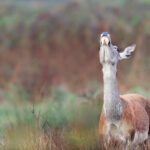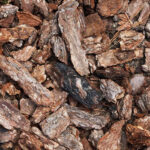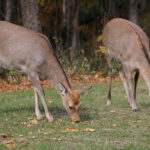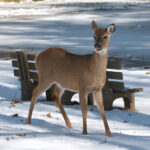A food plot is a practice in hunting whereby areas of land are cultivated and maintained to provide supplemental feeding for animals in the area.
Food plots are pretty common on private land, and in some areas, they are even encouraged–like in North Dakota where they offered free seed to landowners interested in building food plots for pheasants on their property.
But can you plant food plots on public land in your area?
Table of Contents
Are Food Plots Allowed on Public Land?
Food plots are prohibited on almost all federal, state, and municipally owned public land. Introducing unauthorized crops, seeds or other agricultural cultivation to public land can have a detrimental effect on native plants and wildlife.
The actual details are a little fuzzy. Federal land managers explicitly ban food plots on any federally owned land, like national parks, BLM land, USFS areas, and USFWS land.
State-owned land, like wildlife management areas (WMA), state parks, and areas managed by state departments of natural resources (DNR) either explicitly ban food plots, or prohibit the removal of brush and tilling of land.
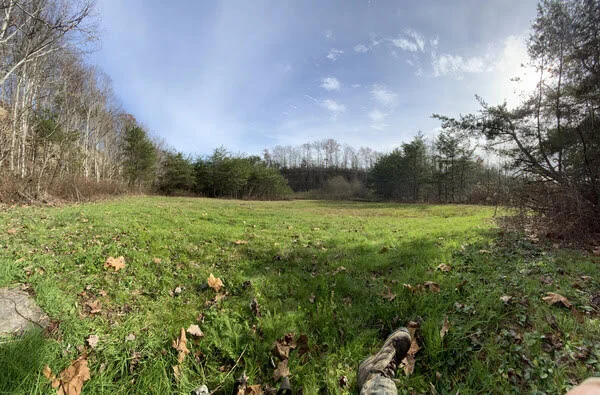
Many land managers also ban baiting and consider hunting over a food plot to be a form of baiting.
At a municipal or county level, it is still best to assume that you are not allowed to start a food plot, but the details of the restrictions can vary from park to park.
If you are unsure of the regulations in your area or want to dig deeper, contact the land manager and ask. The worst they can say is no.
Here is a handy list from Penn State of the natural resource agencies in every state.
Penalties for Planting Food Plots on Public Land
Specific penalties vary from state to state or from county to county.
In our search for penalties, we found sources claiming fines up to $5 for each cut branch on federal land, as well as fines up to $5,000 and/or up to six months in jail.
When Can You Plant Food Plots on Public Land?
Public land managers ban food plots for individuals, but many public parks do build food plots, themselves, to help strengthen the ecosystem within the park.
If you want to get involved in building a food plot on public land, contact your local land managers and pitch your idea to start a food plot in an area that you think would benefit, or ask if you can volunteer on any of their ongoing projects.
Alternatives to Food Plots on Public Land
Maintaining a food plot on public land is a lot of work, and would probably get overrun with other hunters who find out about it anyway.
Rather than planting a food plot, spend some time learning the native species in your area that your game of choice loves to eat and exploring for dense patches within the park.
In some public areas, depending on what practices are actually prohibited, you may be able to toss down some native plant seeds, or plant trees on public land, in an area without tilling or removing any brush.
This would be a relatively inefficient method but may be allowed, especially if you keep baiting concerns in mind.
Why are Food Plots Prohibited?
There are several reasons why you can’t plant food plots on public land. Part of the logic is that allowing individuals to maintain food plots could severely disturb the ecosystem.
Establishing a food plot requires some significant terraforming. If anyone could do it, it’s easy to imagine how things could get out of hand quickly.
There is also concern over the competition that public food plots could create between hunters. It’s public land after all, how would you stop other hunters from hunting over your food plot?
Another major concern, though, is similar to the logic behind banning baiting. Baiting is the practice of putting out a pile of food to attract deer, bears, or other game for hunting purposes.
More and more, baiting and feeding are being banned by land managers because it increases the spread of diseases like chronic wasting disease (CWD) in deer.
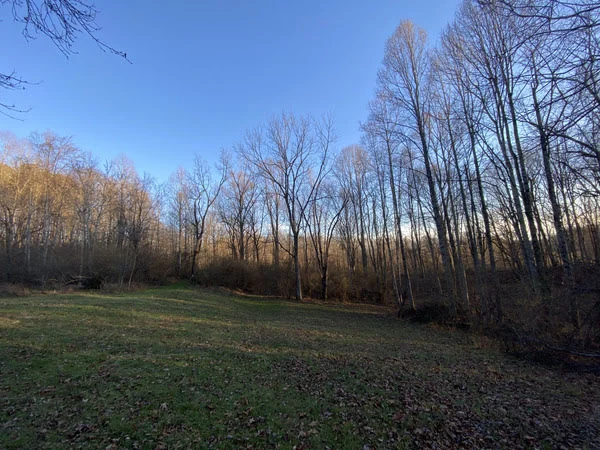
States Where Baiting is Prohibited
These 27 states prohibit baiting completely:
Alabama, Alaska, Arkansas, California, Colorado, Delaware, Georgia, Idaho, Illinois, Indiana, Iowa, Louisiana, Maine, Massachusetts, Missouri, Minnesota, Montana, Nebraska, New Mexico, New York, North Dakota, Rhode Island, South Dakota, Tennessee, Vermont, Virginia, West Virginia, and Wyoming.
States Where Baiting is Allowed
These 14 states currently allow baiting:
Arizona, Hawaii, Kansas, Nevada, New Hampshire, Mississippi, New Jersey, North Carolina, Ohio, Oklahoma, Oregon, South Carolina, Utah, and Washington.
States Where Baiting is Sometimes Allowed
Finally, these 8 states have baiting laws that allow baiting in some counties or under certain circumstances.
Connecticut, Florida, Kentucky, Maryland, Michigan, Pennsylvania, Texas, and Wisconsin.
Final Thoughts
Most land managers prohibit planting food plots on public land because of the potential impact on the ecosystem and the risk of spreading diseases.
If you are keen to develop a food plot try reaching out to your local land manager, or asking some friends if they are interested in putting one on their private land.
Thanks for being a good steward of the land and thanks for reading!
